Words & Photos By Bryan Harley |
| The ride to Camarillo, though, was just the warm-up. To get the group further familiarized with their Indian tourers and baggers, Frey had arranged for us to take a basic rider’s training course once we arrived. Learn to Ride VC instructors Bob Drummond and Jose Padron put our group through the paces, from hard braking to cornering drills and crazy eights in and around cones to emergency swerving. For many it was the first time back on a motorcycle or the first time commandeering one equipped with a sidecar, but it didn’t take long before everybody had learned the nuances of the big bikes and had gained confidence in their riding abilities. The Indian tourers are dialed in properly, from a chassis that makes the bikes easy to manage to a suspension arrangement that helps they track true, and riders acclimated to its characteristics quickly. Lisa Niner’s flat track skills reflected in the way she hustled an Indian Chieftain around and Johnny Killmore’s expertise as a pro sidecar racer shone as he “flew the chair,” deftly slinging the sidecar in the air at will. |
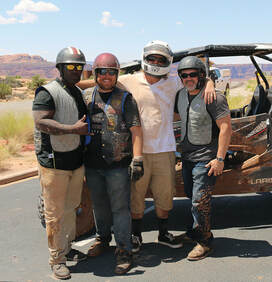
Our newfound riding skills would quickly be tested as the highways were even more congested than before but the group was already establishing a pattern of communicating with hand signals and manipulating traffic in order to merge collectively. Hot, tired, and eager to get back to the hotel, the riders took a circuitous detour on a small side road in an industrial district, wrong turns easy enough to do in the matrix of LA’s city streets. While for all intents and purposes we appeared to be lost, the second of Frey’s carefully orchestrated surprises soon came rolling up from the opposite direction on a 1934 Indian Scout. The closer he got, the more the signature denim garb and silver hair made it apparent that the rider was Jay Leno. The avid gearhead invited the veterans in for a private tour of his legendary garage. The group entered Leno’s Garage with wide-eyed wonder as one hallway led to another in a seemingly unending mixture of high-end exotic sports cars, hot rods, one-off creations, motomemorabilia, and probably the most extensive collection of Brough Superiors around.
“That’s the oldest Brough in the world right there, 1920-21, they only built three or four that year. The fastest is the SS 100 over here,” Leno said.
Not surprisingly, the famous roadster with the M47 Patton tank engine was a big hit with the veterans.
“We put Bosch fuel injection and twin turbos on it,” Leno said before quoting mind-numbing horsepower numbers.
“That’s the oldest Brough in the world right there, 1920-21, they only built three or four that year. The fastest is the SS 100 over here,” Leno said.
Not surprisingly, the famous roadster with the M47 Patton tank engine was a big hit with the veterans.
“We put Bosch fuel injection and twin turbos on it,” Leno said before quoting mind-numbing horsepower numbers.
Heading into his Big Dog Garage, Leno seemed eager to “fire things up” for the veterans, the working order of the machines in his collection a source of pride. He started with the Turbine Chrysler, Niner, jokingly saying it sounded like a Black Hawk. Leno prepped and primed the stubborn Christie Front Drive Fire Engine next, which eventually cranked after about the fifth try. The Autocar was then hand-cranked to life much to the delight of the group. However, all of this paled in comparison withthe moment when Leno flipped the switch on a Merlin V 1650 airplane engine, the vaunted powerplant that made the P-51 Mustang a formidable fighter plane during World War II. In true Leno’s Garage fashion, the V-12 was in immaculate condition. Jay had the engine hauled out with a forklift before initiating the firing sequence and with a puff of smoke it bellowed to life. Afterwards, Leno mingled with the veterans, mugging for photographs, signing autographs, and shaking hands, the affable host displaying sincere gratitude for their service and sacrifices in the name of our country.
The following morning the regiment known as Bags Down, Kickstands Up was initiated as the first official day of the ride commenced. Travel bags had to be down early each morning to be put in the support trailer, and kickstands had to be up at a set time to keep the group on schedule. Before scurrying up Angeles Crest, one of the most popular motorcycling roads in SoCal, we gathered at Sun Valley Fire Station #77 for a Grand Send-Off celebration. Cameras were rolling when we pulled in: Los Angeles TV station KTLA was shooting a feature on the Veterans Charity Ride, the shoot spearheaded by longtime KTLA personality Gayle Anderson. First responders and several veteran motorcycling clubs filled the firehouse to give the veterans a proper send-off. Sirens from a police escort serenaded our departure as we formed a posse with the LAFD Fire Hawgs and rolled out of town.
The following morning the regiment known as Bags Down, Kickstands Up was initiated as the first official day of the ride commenced. Travel bags had to be down early each morning to be put in the support trailer, and kickstands had to be up at a set time to keep the group on schedule. Before scurrying up Angeles Crest, one of the most popular motorcycling roads in SoCal, we gathered at Sun Valley Fire Station #77 for a Grand Send-Off celebration. Cameras were rolling when we pulled in: Los Angeles TV station KTLA was shooting a feature on the Veterans Charity Ride, the shoot spearheaded by longtime KTLA personality Gayle Anderson. First responders and several veteran motorcycling clubs filled the firehouse to give the veterans a proper send-off. Sirens from a police escort serenaded our departure as we formed a posse with the LAFD Fire Hawgs and rolled out of town.
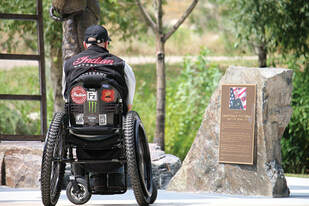
The send-off in Sun Valley was just the beginning of a multitude of receptions, and honor guards were eager to present the veterans the heros’ welcome they deserve. The town of Eagle, Colorado, rolled out the red carpet, its streets filled with people waving the red, white, and blue. Hot food, cold beer, and live music awaited at the Dusty Boot Roadhouse at a party hosted by Blake Connor and the team at REVER, an Eagle-based company that makes an app that helps motorcyclists create, track, and share rides. But no community embraced the riders more openly than Moab, Utah. Before they were even in town the veterans were greeted by American flags flying proudly on the back of motorcycles, and a welcoming committee stood roadside in full salute. Members of the Patriot Guard Riders and other local veterans then led the procession to a grand celebration in Moab’s Swanny City Park.
At the park the city greeted the Veterans Charity Ride with arms flapping, flags waving, hands clapping, and bagpipes skirling. Organizers had created a row of flags through the park, and one by one the veterans rode proudly through an avenue of Stars and Stripes, members of Utah VFW 10900 saluting them as they passed by. It was patriotism at its finest, from a rousing rendition of the National Anthem with a hand-on-heart Pledge of Allegiance.
The veterans were seated center stage under a pavilion as Moab’s community leaders took turns paying tribute to their arrival, none more poignantly Moab Police Chief Jim Winder.
“Ladies and gentlemen, it’s a little humbling standing up here before you. Watching you come in was an emotional experience,” said Winder. “So somebody walked up to me just a few minutes ago and said, ‘We honor your service in blue.’ It made me really think of the term service. Yes, in law enforcement we provide a service to this community and to this nation, but I kind of consider law enforcement the little brother. The big brother is those that have protected this nation and provided such service and dedication and placed themselves at such great risk. It’s an honor for people to come up and thank us, but I tell you no amount of thanks is enough for what all of you have done.”
The veterans were seated center stage under a pavilion as Moab’s community leaders took turns paying tribute to their arrival, none more poignantly Moab Police Chief Jim Winder.
“Ladies and gentlemen, it’s a little humbling standing up here before you. Watching you come in was an emotional experience,” said Winder. “So somebody walked up to me just a few minutes ago and said, ‘We honor your service in blue.’ It made me really think of the term service. Yes, in law enforcement we provide a service to this community and to this nation, but I kind of consider law enforcement the little brother. The big brother is those that have protected this nation and provided such service and dedication and placed themselves at such great risk. It’s an honor for people to come up and thank us, but I tell you no amount of thanks is enough for what all of you have done.”
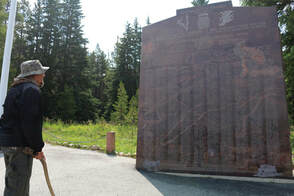
While there were many memorable moments during the celebration, none was more moving than when two young sisters walked up on stage and handed the veterans letters they had written and decorated with their own drawings. When the girls heard the veterans were coming to town they wanted to do something to let them know they cared. It was the type of moment that brought tears to the eyes of even the most battle-hardened veterans.
As the ceremony wound down, a mountain of a man played the theme song of every branch of service on his bagpipe, from The Army Goes Rolling Along to Wild Blue Yonder. The veterans proudly raised their hands as their theme played. The celebration culminated in countless hugs and handshakes between veterans and the crowd.
During the nine-day journey from Los Angeles and Sturgis our group made several visits to veterans’ memorials. The stop at the 10th Mountain Division Memorial at Tennessee Pass, Colorado, was particularly emotional. Perhaps this was because of the veterans seeing“990 Comrades in Arms Who Gave Their Lives on the World War II Battlefields of Italy and the Aleutian Islands” inscribed on a giant wall. Somberness painted veterans’ faces in hues of sorrow as heads bowed in reverence to the fallen. Meanwhile the visit to the bronze statue commemorating Captain William H. “Pyro” DuBois Jr. had a more celebratory tone, thanks to a visit from special guests William “Ham” DuBois and his wife, Donna, the fallen pilot’s parents. Pyro was a talented airman and recipient of two Top Gun awards who “lost his life in the Middle East while flying in support of Operation Inherent Resolve when his F-16 crashed in the desert after making sure his wingman had landed safely.” His parents shared how they created Pyro’s Wings Foundation” in his honor to provide financial support to future combat pilots.
As the ceremony wound down, a mountain of a man played the theme song of every branch of service on his bagpipe, from The Army Goes Rolling Along to Wild Blue Yonder. The veterans proudly raised their hands as their theme played. The celebration culminated in countless hugs and handshakes between veterans and the crowd.
During the nine-day journey from Los Angeles and Sturgis our group made several visits to veterans’ memorials. The stop at the 10th Mountain Division Memorial at Tennessee Pass, Colorado, was particularly emotional. Perhaps this was because of the veterans seeing“990 Comrades in Arms Who Gave Their Lives on the World War II Battlefields of Italy and the Aleutian Islands” inscribed on a giant wall. Somberness painted veterans’ faces in hues of sorrow as heads bowed in reverence to the fallen. Meanwhile the visit to the bronze statue commemorating Captain William H. “Pyro” DuBois Jr. had a more celebratory tone, thanks to a visit from special guests William “Ham” DuBois and his wife, Donna, the fallen pilot’s parents. Pyro was a talented airman and recipient of two Top Gun awards who “lost his life in the Middle East while flying in support of Operation Inherent Resolve when his F-16 crashed in the desert after making sure his wingman had landed safely.” His parents shared how they created Pyro’s Wings Foundation” in his honor to provide financial support to future combat pilots.
While celebrations in small towns and paying tributes to monuments across the Western states deepened bonds, nothing brings people together like sharing the open road. And the path to Sturgis wasn’t just any road. As we crossed the Mojave Desert the first day, we fought a war of attrition against temps of 115 F. The following days the immensity of Zion and Grand Staircase-Escalante National Monument lent new perspectives on life as we rode through some of the most majestic scenery our country has to offer. After taking a deep breath of the pristine air on a 12,000 foot pass in the Rocky Mountains, we felt that just climbing on a motorcycle makes you feel alive. Hours later we pushed through rain and hail over roads pooling with water, banding together to ensure everyone made it through safely. Taking care of one another came natural to this group.
After nine days and 1900 miles on the road, the pot of gold at the end of the rainbow was finally in sight. For several of the veterans it would be their first visit to Sturgis which pumped up excitement levels. One of my newfound friends, Richie “Two Chairs” Neider, had always wanted to ride to Sturgis but had given up the dream once he lost use of his legs. Now that dream was about to be a reality. Seeing the determination on veteran Moses Sonera’s face to make it all the way to Sturgis, to push through the pain and discomfort caused by this prosthetic, was inspiring to say the least. We paraded up Main Street with full pomp and circumstance, people waving and taking pictures as we rode by. Main Street barraged the senses, banners flapping above the street, sidewalks teaming with a circus of women in body paint and muscle-bound men in leather vests, music spilling out of One-Eyed Jacks and the Loud American Roadhouse, and motorcycles everywhere. Pulling into Indian Motorcycle of Sturgis, riders ahead of me disappeared into a sea of red, white, and blue. Hopping off our bikes, veterans’ faces filled with a sense of accomplishment. Monster Energy girls fueled the party as the vets hugged one another, engulfed by the cheers of family and friends.
For me the moment was a bit melancholy. I’d grown fond of this group and was sad we’d no longer be riding together. Strangers had grown into friends. But I was happy to see that Dave Frey’s moto therapy program had worked. It had taken veterans who suffer from PTSD and who struggle with being in crowds and made them feel comfortable again in social settings. I’ve seen how the program has given veterans who let their disabilities hold them back rejuvenated with the attitude that there’s nothing they can’t do. I’ve witnessed how getting veterans together who have been through the same traumatic experiences brings about healing when they open up to one another. I’ve observed how the therapy of riding a motorcycle can light up the faces of veterans when they climb behind the handlebars. Although I’ve had the privilege of taking part in many rides in my career as a motojournalist, sharing the road with the Veterans Charity Ride to Sturgis was one of those rare opportunities to experience something extraordinary, one that I’ll forever be grateful for.
After nine days and 1900 miles on the road, the pot of gold at the end of the rainbow was finally in sight. For several of the veterans it would be their first visit to Sturgis which pumped up excitement levels. One of my newfound friends, Richie “Two Chairs” Neider, had always wanted to ride to Sturgis but had given up the dream once he lost use of his legs. Now that dream was about to be a reality. Seeing the determination on veteran Moses Sonera’s face to make it all the way to Sturgis, to push through the pain and discomfort caused by this prosthetic, was inspiring to say the least. We paraded up Main Street with full pomp and circumstance, people waving and taking pictures as we rode by. Main Street barraged the senses, banners flapping above the street, sidewalks teaming with a circus of women in body paint and muscle-bound men in leather vests, music spilling out of One-Eyed Jacks and the Loud American Roadhouse, and motorcycles everywhere. Pulling into Indian Motorcycle of Sturgis, riders ahead of me disappeared into a sea of red, white, and blue. Hopping off our bikes, veterans’ faces filled with a sense of accomplishment. Monster Energy girls fueled the party as the vets hugged one another, engulfed by the cheers of family and friends.
For me the moment was a bit melancholy. I’d grown fond of this group and was sad we’d no longer be riding together. Strangers had grown into friends. But I was happy to see that Dave Frey’s moto therapy program had worked. It had taken veterans who suffer from PTSD and who struggle with being in crowds and made them feel comfortable again in social settings. I’ve seen how the program has given veterans who let their disabilities hold them back rejuvenated with the attitude that there’s nothing they can’t do. I’ve witnessed how getting veterans together who have been through the same traumatic experiences brings about healing when they open up to one another. I’ve observed how the therapy of riding a motorcycle can light up the faces of veterans when they climb behind the handlebars. Although I’ve had the privilege of taking part in many rides in my career as a motojournalist, sharing the road with the Veterans Charity Ride to Sturgis was one of those rare opportunities to experience something extraordinary, one that I’ll forever be grateful for.
0 Comments
Leave a Reply.
News
Archives
June 2022
February 2022
July 2021
January 2021
August 2020
July 2020
March 2020
February 2020
November 2019
September 2019
August 2019
July 2019
June 2019
August 2018
July 2018
June 2018
August 2017
July 2017
June 2017
April 2017
March 2017
February 2017
December 2016
August 2016
June 2016
May 2016
April 2016
March 2016
December 2015
November 2015
August 2015
July 2015
June 2015

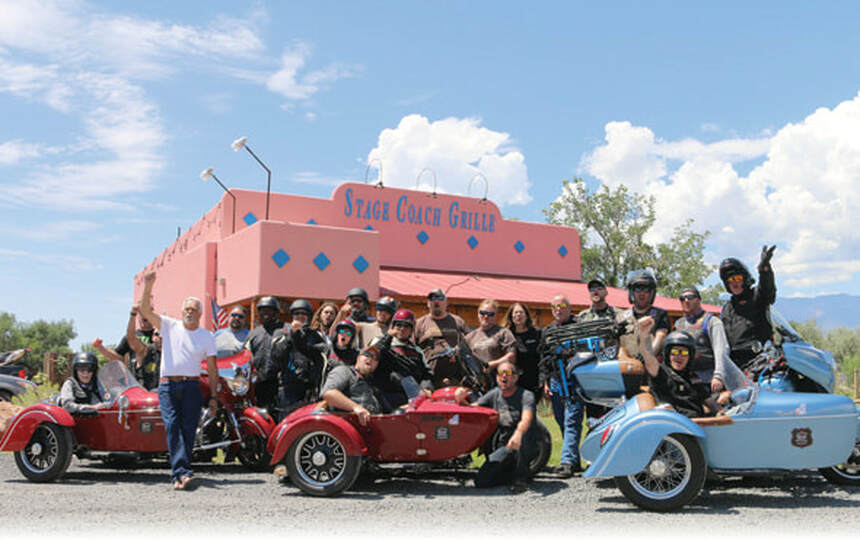
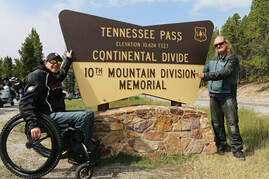
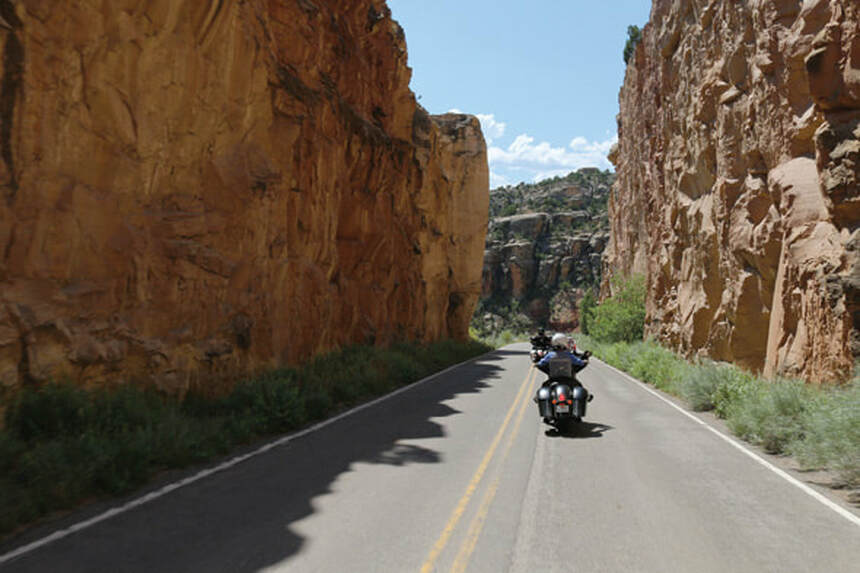
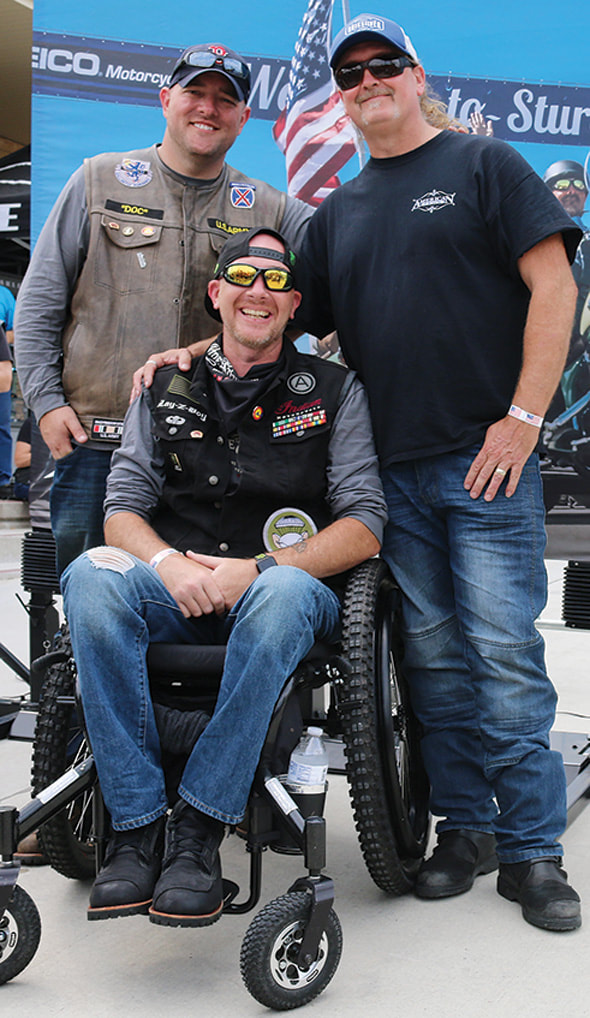
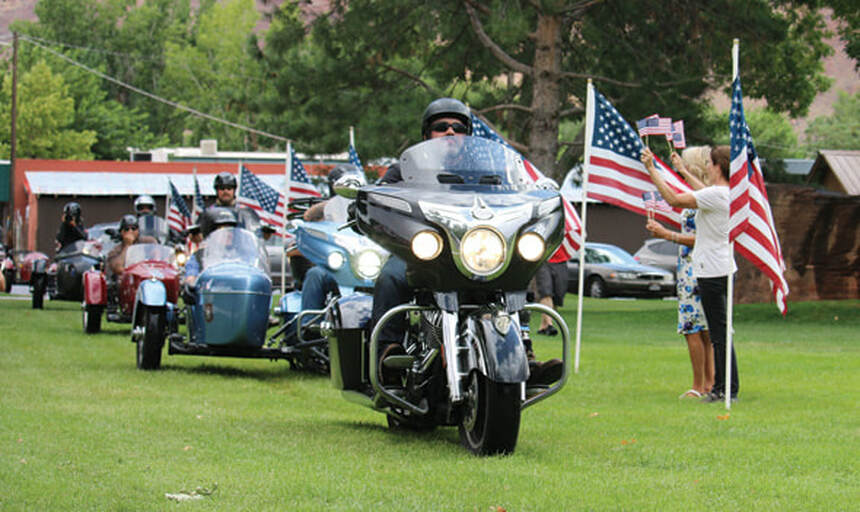
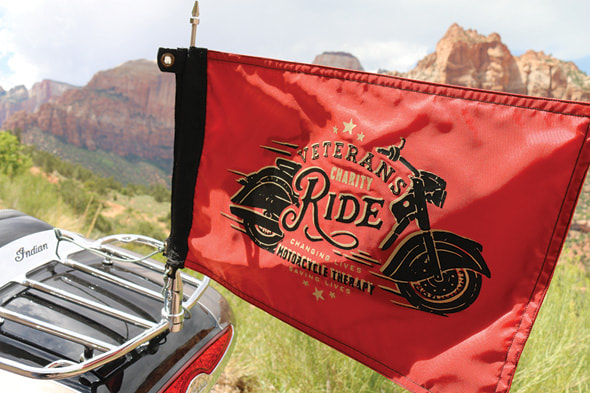
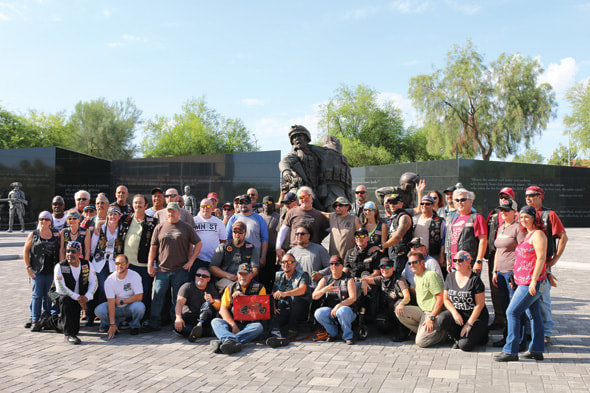
 RSS Feed
RSS Feed


